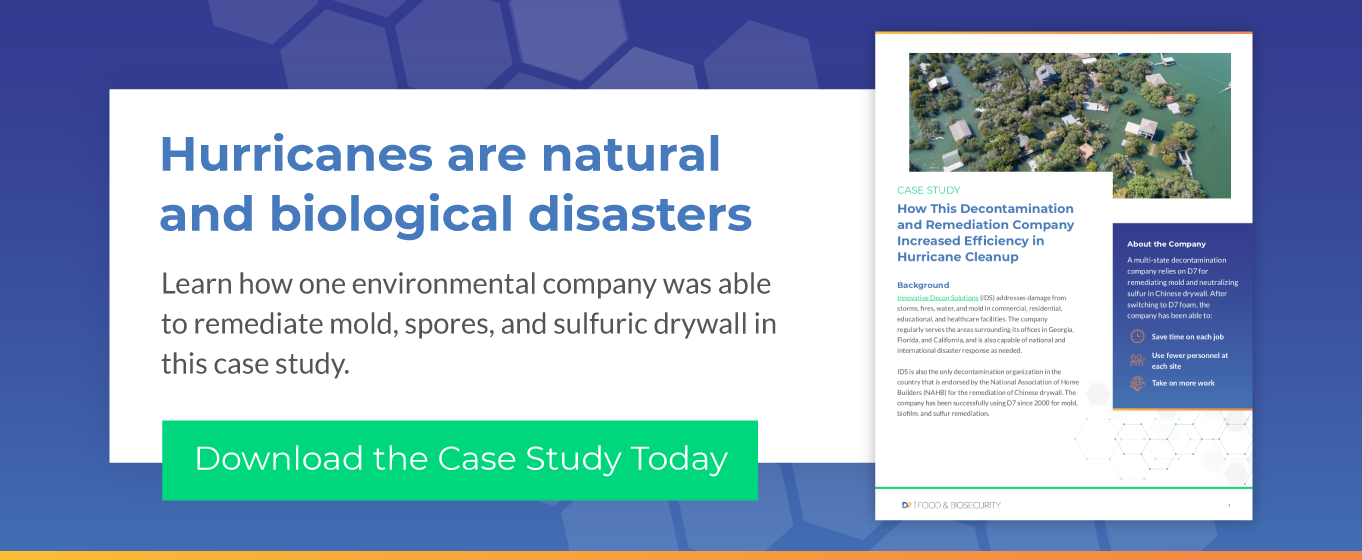Heating, ventilation, and air conditioning (HVAC) systems are invisible but essential elements of a comfortable indoor environment in any residential or commercial space. As the lungs of a building, HVAC systems are responsible for circulating air and heating or cooling it simultaneously.
However, when not properly maintained, HVAC systems can deliver poor quality air, harming occupants, furnishing, and the HVAC system itself. Sanitizing HVAC systems periodically helps prevent these adverse effects.
The Dangers of Poor Indoor Indoor Air Quality
Because indoor air is often recirculated, it usually has a higher concentration of pollutants than outdoor air. Specifically 2-5 times more, according to the EPA. Depending on the pollutants and their concentrations, this could affect the health of occupants, leading to symptoms such as:
-
- Eye, nose, and throat irritation
- Dizziness, fatigue, and headaches
- Heart and lung diseases or cancer
These effects can be immediate or chronic. Sometimes people react upon entering a room, and others may not know there’s an issue until it’s too late. Because most people spend the majority of their time indoors—about 90 percent, according to the EPA—the risks are real. Certain populations are at higher risk for adverse health effects, including children, people with asthma or other respiratory conditions, and people with compromised immune systems.
6 Reasons to Sanitize HVAC Systems
Sanitizing HVAC systems is not always a top priority because of their invisible nature. It’s easy to forget about ductwork and other components when you don’t see them daily. However, there are several reasons to incorporate HVAC sanitizing into your building maintenance routines:
1. Adverse Health Effects
The most urgent reason to address poor indoor air quality is to reduce the risk of exposure to pollutants that can have health effects. These health effects are not always obvious or immediate, so a proactive approach is recommended.
2. Sick Building Syndrome
The term “sick building syndrome” was coined in recent years, meaning when people don’t feel well inside a building but get better after leaving. This condition is attributed to poor indoor air quality and could be linked to excess pollutants due to subpar ventilation or contaminants in HVAC systems.
3. Odors
The growth of bacteria and mold can lead to unpleasant odors circulated throughout a space. This is not only unpleasant for occupants, but could also be a symptom of a larger issue that could lead to potential health effects.
4. Pathogens
Mold, bacteria, and viruses can grow in HVAC systems and then be circulated. Sanitizing key components of HVAC systems and ductwork can reduce the presence of these pathogens. Being proactive will ensure that any mold or bacteria doesn’t have the opportunity to get out of control.
5. Allergens
Mold, pollen, dust, and pet dander can cause allergic reactions for some building occupants. In addition to replacing air filters at the recommended frequency, periodic cleaning and sanitizing can reduce the presence of these potential irritants.
6. Equipment Protection
Mold and other pollutants can potentially damage HVAC equipment and components if left untreated. Dirty equipment can also operate less efficiently, increasing the costs to heat, cool, and ventilate a building. Periodically sanitizing HVAC equipment can help extend its life and improve efficiency.
How Decon7 Helps
Decon7 Systems provides D7, an EPA-approved disinfectant, sanitizer, and fungicide for use in all types of buildings. Smart foam technology allows D7 to reach even the most challenging surfaces, including difficult-to-reach HVAC components and condensation drains. D7 fog can also be applied to HVAC systems to disinfect.
Designed to be deployed in any environment, the product does not damage sensitive HVAC components. D7’s patented formulation reduces pathogens up to 99.9999 percent and is effective against the SARS-CoV-2 virus, the cause of COVID-19. With multiple mechanisms to kill pathogens—including killing at the DNA level—D7 is an excellent supplement to any HVAC maintenance program.
D7 is also an EPA-registered fungicide that is effective against common types of mold. The product is used by mold remediation professionals in residential and commercial environments to kill spores. D7 foam is particularly effective for reaching mold in challenging spaces, such as behind walls, inside ducts, and in the smallest of cracks.
To learn about a real-world application of D7, read our case study, How This Chemical Decontamination and Remediation Company Increased Efficiency in Hurricane Cleanup.

.png?width=1160&name=Copy%20of%20Decon7%20Blog%20%23139%20(1).png)

